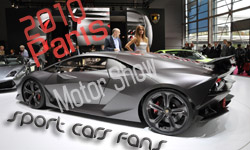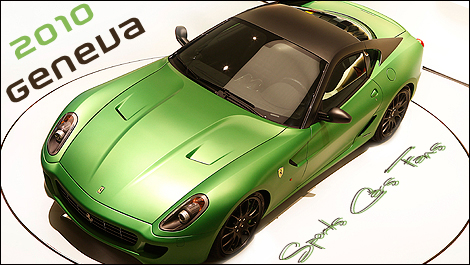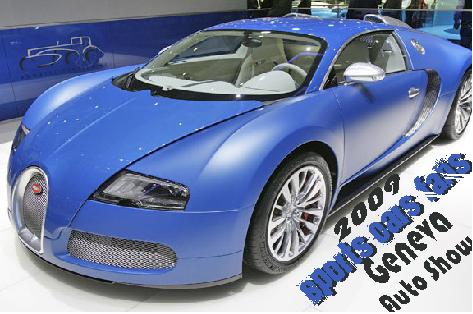Review: 2009 BMW 335d

In recent weeks, America's comparatively stratospheric price of diesel fuel has slid back down to achieve parity with the price of conventional gasoline. One might think this development means it's a great time to invest in a new oil-burner for the driveway, but the reality is that unless you're an OPEC minister, there's no good way to ensure this pricing trend is here to stay. So, allow us to table the fuel economy argument for a moment and suggest a radically different reason for going diesel: driving enjoyment.
While this idea may strike as an inherently foreign concept to most American motorists, the truth is that the torquetastic nature of diesel engines is particularly well suited to the Great American Roadscape – even more so than hybrid drivetrains. You can be forgiven for thinking otherwise – after all, automakers haven't exactly given U.S. consumers a boatload of entertaining derv burners to sample, have they? Thankfully, the folks at BMW may have just the prescription: the 335d.
Long the benchmark of the entry-level luxury class – the very yardstick by which sport-sedan driver engagement is measured – BMW's 3 Series has sprouted a new diesel model for 2009. Packing a dual sequential turbo 3.0-liter inline-six that's 50-state legal, the 335d offers a utile 265 horsepower (at 4,220 rpm) and an embarrassment of torque – 425 pound-feet of the stuff at just 1,750 rpm. For those taking notes, that's five more than the 6.2-liter V8 honker in Chevrolet's new Camaro SS. In other words, this innocuous Alpine White sedan harbors the stones of a muscle car – or a full-size pickup.
Given such lopsided power figures, you might surmise that the 335d gets down the road in a decidedly different fashion than its gas-fueled Bavarian brethren – and you'd be right. While the 300 hp, 300 lb-ft. 335i has plenty of gumption, the 335d delivers its ceaseless shove from idle on up, rendering gearshifts from its six-speed automatic all but superfluous. Like all diesels, this 24-valve I6 is a low-revver, but its BorgWarner sequential blowers deliver sufficient torque to fell every last tree in the Black Forest.

Carpet the throttle, and the distant gurgle emanating from beneath the hood swells and hardens appreciably – but not objectionably. And while the mechanicals remain well isolated, even among casual gearheads, there should be no mistaking this powerplant's noises or its delivery for the gasoline model. In contrast, the likewise wonderful 3.0-liter twin-turbo gasoline setup in the 335i is quicker to rev and makes an altogether different, more melodic noise. Which tone you prefer aurally will depend on whether you favor a tenor soundtrack or basso profondo.

By extension, the 335d feels more at home piling up miles on the interstate than its octaned-up stablemates, where it can lope along effortlessly, its gargantuan passing power just a throttle-tickle away. We piled three Autobloggers and our gear for a 300-mile jaunt from Ann Arbor to Chicago by way of Lansing, whereupon we quickly learned that this car's natural, almost sleepy cadence lurks dangerously above the 85mph mark. Passing double- and triple tractor-trailers was a doddle, requiring little more than an outstretched pinky toe to gush past. At such velocities, the d's engine noise is just this side of nonexistent, and its ride so finely-snubbed that it's nearly impossible to appreciate the rapidity of the experience without sneaking a look at the gauges. At 80 mph, the engine is barely shrugging, turning just 2,000 rpm. There's a reason that BMW speedos read in 20 mph increments.
As an almost incidental footnote to our phenomenal progress, we realized a handsome 32.7 miles-per-gallon while lending absolutely no thought to fuel conservation. Given this the car's 16.2-gallon tank, this means that total range figures to be a Kegel muscle-straining 525+ miles – or longer if you are more restrained with the throttle. For its part, the EPA (and the sticker job on our cleverly disguised test car) says you should expect 23 miles-per-gallon city and 36 highway, and we believe it. By comparison, a 335i is rated at 17/26. Tipple lightly on those beverages, dear passengers, because this BMW ain't stoppin'.

All of this highway talk is not to say that the 335d isn't adept at carving duty – the car's rock-solid chassis, progressive, drama-free brakes and tight, linear rack-and-pinion steering all reward just like every other 3 Series currently on the market (Note: Active Steering is not available on this model in the U.S.). It's just that the d's low-revving delivery is more in tune squirting away from stoplights and dispatching interstate miles by the stateful than it is bouncing off the rev limiter while straightening spaghetti corners. It's a fundamentally different sort of enjoyment and it reflects a set of priorities.
At one point in their development, it was hard not to loathe run-flat footwear, but now that both tire manufacturers and suspension engineers have had a few generations to refine and integrate their unique ride and handling characteristics, they seem to be on better terms with each other. We didn't find our car's front strut/rear multilink setup to be objectionably firm, although lateral breaks in the pavement did deliver a noticeable thwack from the 17-inch Bridgestones. However, even this was noted more in our eardrums than by our backsides. We suspect the optional sport pack ($2150) with its stiffer suspension, inch-larger footwear, and firmer sport seats might be pushing things a skosh for those with sensitive nether regions, but in the past, we've had a 2008 sport pack sedan on Michigan's pockmarked winter roads and the combination didn't strike us as intolerable.
Admittedly, this is all sounding like so much gravy – is there nothing to complain about? Well, hang on. Despite reportedly effecting upwards of 2,500 changes to the 3 Series for 2009, there's no getting around the fact that this sedan's cabin is getting on a bit. Color and trim choices are restrained and rather somber, there's too much hard (if well-grained) plastic, and the pop-out cupholders are about as accommodating as the warden at Sing Sing. In fact, the whole interior generally feels style-free – perhaps because its architecture is so familiar. At least everything feels reassuringly solid, the seats are well sculpted and the armrests are finally usable, but a bit of surprise-and-delight would go a long way here.

Lest we forget, BMW's latest iDrive is now markedly more intuitive than before, thanks largely to a new array of buttons clustered around the ol' metal porkpie. The system even seems to be quicker scrolling from menu to menu. However, iDrive still isn't terribly easy-to-use, and it strikes us as telling that with each successive generation, BMW has been backing out more and more redundant buttons to go along with its all-in-one controller. Progress through regression, as it were. At least there is a new bright and crisp 8.8-inch display to keep tabs on all of the functions. Still, at $2,100 for sat-nav, we would be sorely tempted to consider going the iDrive-free Garmin route instead.

Speaking of cost, you can all but grenade your 401k (well, what's left of it) just upgrading the stereo. Riddle us this: $875 for the upgraded 13-speaker Logic7 premium stereo, plus $400 for an iPod/USB adapter and $595 for Sirius (including one year's service). HD radio? That'll be another 350 clams, bitte. Add in navigation and you're looking at $4,320 in center-stack extras, and you still don't have segment standards like Bluetooth ("smartphone"), keyless entry ($500 "comfort access"), leather cosseting your keyster ($1,450), or even folding rear seats ($475).

All of which makes the $100 paddleshifter option seem like an even bigger bargain, but since there's not much need to swap cogs with all that torque (and there's a standard tipshift feature on the console-mounted gearlever anyhow), the more significant "get" is the three-spoke sport steering wheel that the paddles come bundled with. Not that there was anything wrong with our tester's standard wheel, but for a Benjamin we'd take the racier-looking item. Those looking for a three-pedal arrangement will have to settle for a 328i or a 335i, however, as there are no manual transmission diesels for America, just as there is no all-wheel drive model, no coupes, convertibles, or touring bodystyles. If you want hot oil, it's an automatic rear-drive sedan or nothing, which makes sense, considering BMW wants to minimize its exposure while still seeing if there's sufficient demand for its diesels in America.



If the 3's interior is starting to look overly familiar, so is the sheetmetal wrapper it came in. BMW has actually refreshed a substantial number of exterior pieces for this model year, including a new grille, bumpers, hood, side mirrors, and updated light fixtures front and rear. That's a lot of changes, yet most bystanders and carspotters alike won't notice these alterations in isolation – you really have to view the 2009 model side-by-side with a 2008 to appreciate the improvements. While the 3 still isn't what we would call a beautiful car, it is now more assertive looking, particularly from the rear, where the reshaped jeweled taillamps and wider stance (up .95 inches) help it look a bit less frumpy and a bit less, well, mid-Nineties Nissan Maxima. Like most BMW sedans, the 3 is a design that responds particularly well to the fitment of larger wheels and tires, so the modestly-sized kicks on our tester downplayed things somewhat.
Any other issues? Sure, we observed a brief bout of stereotypical diesel rattle during one particularly cold morning warm-up, but it wasn't pronounced or accompanied by any of the "wet dog shake" that we've experienced in some less well-behaved modern diesels. More germane to the drivetrain's operation is its urea injection system, whose ablutionary powers require fresh AdBlue fluids every 12,000 to 15,000 miles – but at least that's free for four years or 50,000 miles (as is most everything else with BMW's standard Maintenance Program).
From where we sit, the fact that the 335d is the costliest 3-Series this side of an M3 doesn't really upset its value proposition. The model retails for $43,900, while a comparable 335i automatic rings up at $41,625 (plus $825 in destination charges for either), meaning that there's a $2,275 difference. Thankfully, Uncle Sam helps out by kicking in a $900 tax credit, leaving a shortfall of just $1,375. Sure, the diesel gives up 45 horsepower, but it also gains 125 additional torques, a substantial improvement in fuel economy and a motoring style all its own. Don't get us wrong – we treasure the 335i's 3.0-liter gas twin-turbo engine – it's one of our very favorite powerplants. But this 335d is a different kind of wonderful, and it paves its own way to driving excitement.
[Source: Autoblog]















